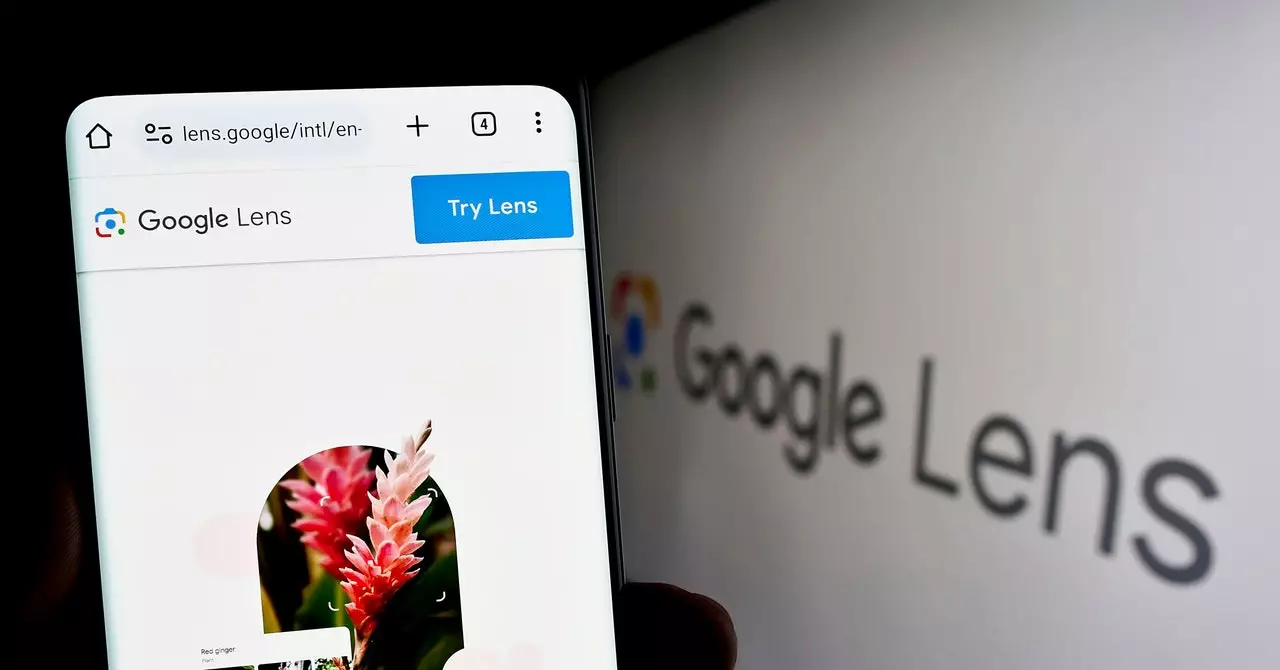When Google Lens was unveiled in 2017, it revolutionized the search experience and set a new benchmark for how we interact with technology in everyday life. The ability to point a smartphone camera at an object and have it identified instantaneously was once a concept taken from the realm of science fiction. Gone were the days of clumsy text inputs and the laborious task of describing an item verbally or through typing. Instead, users could leverage the power of visual search, streamlining the information-gathering process in a way that felt intuitive and immediate.
This revolution was not just about convenience; it demonstrated Google’s commitment to integrating machine learning and artificial intelligence into its ecosystem. With hundreds of millions of users now engaging with Google Lens, the feature has evolved, adapting alongside advancements in generative AI technology. Today, as search engines pivot to encompass more than mere textual queries, Google Lens is poised to explore new dimensions of visual search, extending its capabilities into realms like video and multimodal inputs.
The most recent updates to Google Lens reflect an ongoing trend in the tech sphere: the desire for fluid and comprehensive search experiences. Specifically, the surge in the visual search landscape, which enables consumers to engage with a variety of media—images, text, video, and now voice commands—marks a significant leap forward. The introduction of voice inputs has enriched the user experience. Imagine pointing at a pair of sneakers while asking aloud, “Where can I buy these?” This represents a monumental step in user-centric design, minimizing the effort required to obtain information.
Moreover, Google Lens is now on the forefront of integrating shopping functionalities, a critical application for many users. In prior iterations, if you searched for a product, you might have encountered a standard carousel of similar items without much context. The upgraded Lens experience offers deeper insights, including customer reviews, comparisons, and quick purchasing options, directly enhancing the shopping experience. As commerce continues to migrate towards visual platforms, Google Lens solidifies its role in the shopping journey by providing the tools to make informed decisions swiftly.
Among the most exciting features to emerge within the latest Google Lens update is its capability to process real-time video. This innovation goes beyond the classic snapshot; it allows users to seek assistance with dynamic situations. For example, if you are confronted with a malfunctioning appliance or a broken item, capturing a video and receiving instant troubleshooting guidance transforms the way we address everyday hurdles.
Although this real-time video functionality currently remains somewhat experimental, it holds tremendous potential. The prospect of being able to search through stored videos or accessing vast databases opens up an entirely new realm of possibility. Imagine being able to conduct searches on a repository of videos similar to how we sift through images today. Such an advancement could dramatically alter how we consume information and shop online, as visual cues from video content become as searchable as still images.
The interplay between Google Lens and Google’s ambitious Project Astra is particularly noteworthy. Project Astra aspires to utilize multimodal inputs to deepen our understanding of the environment around us, echoing similar goals put forth by companies like Meta that envision augmented reality through smart glasses. While Google previously attempted to enter the augmented reality market with Google Glass, the new advancements in Lens and Astra might signal a renewed approach to wearable technology.
As these features mature, we can speculate that the advent of smart glasses could be on the horizon. Integrating Lens’s capabilities into an augmented reality framework could allow users to interact with their environment in entirely novel ways. Whether it’s identifying products or accessing information seamlessly in real time, the fusion of these technologies may change our interactions with the world around us fundamentally.
The evolution of Google Lens and its expanding feature set represents not just an upgrade in search technologies but also a pivotal shift in how we perceive and interact with the world. By emphasizing multimodal inputs and enhanced shopping capabilities, Google Lens is not simply keeping pace with technological advancements; it is paving the way for future innovations that could impact several aspects of our daily lives. As we continue to embrace these changes, it’s evident that the capabilities of visual search are still just beginning to unfold, hinting at an exciting frontier for both technology and commerce.

